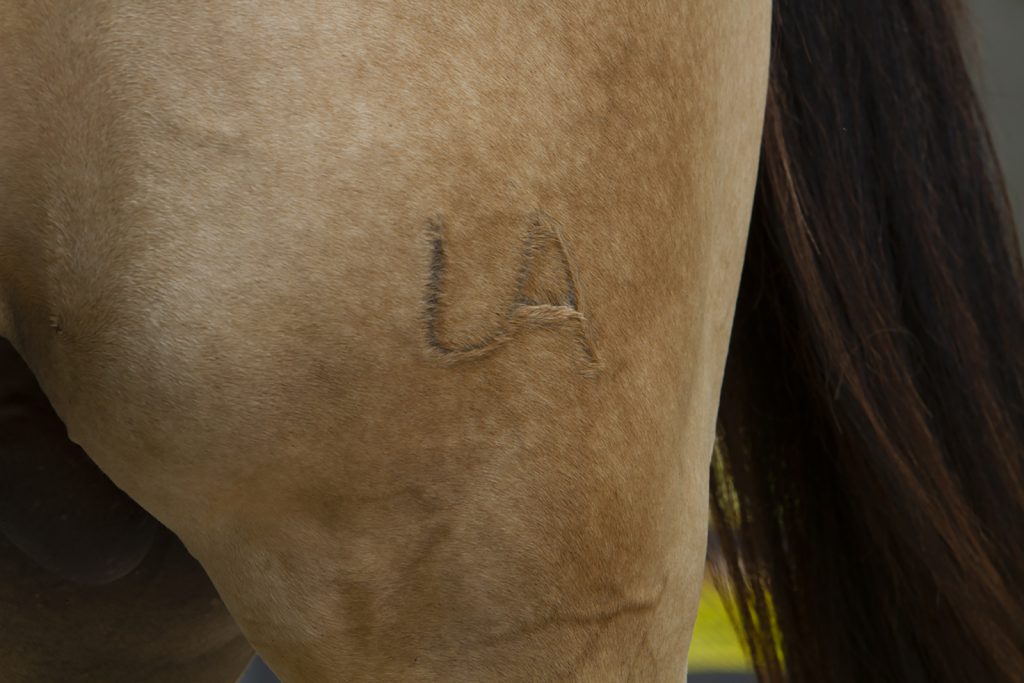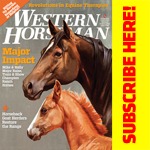A trip to a maximum-security prison proved to be an unexpected adventure for two Western Horseman editors.
It’s difficult to pick out an outfit that fits the following criteria: must look professional; be of Western attire; be comfortable in muggy Louisiana in August; and fit a seventh-month-pregnant belly. Also, whatever is chosen will be worn into a prison. Just your everyday wardrobe, right?

That was me, picking out an outfit and willingly walking into a prison. I was headed to the maximum-security Louisiana State Penitentiary with the intention of learning about its horse breeding program and cattle operation that utilizes inmates to work, ride and manage livestock. I wanted to find out what made it an American Quarter Horse Association Ranching Heritage Breeder.
It was a story I had planned before my pregnancy, and I couldn’t pass it up. In addition to the prison, we visited a bit- and spurmaker and a talented young horsewoman name Meredith Scroggs. My editor, Christine Hamilton, joined me, which I would later be forever grateful as she was my co-pilot during this adventure. On the planned day, we drove down the long, unassuming road north of Baton Rouge, lined with thick trees.
Here’s the kicker — neither of us realized we were going to the Louisiana State Penitentiary at Angola, as in THE Angola, also known as the “Alcatraz of the South,” which came about from the prison’s long, bloodied, controversial past.

Angola is the largest maximum-security prison in the United States with 6,300 inmates on 18,000 acres. It is for inmates who will most likely be serving life sentences, with no chance of parole. It’s not somewhere my OB-GYN would’ve wanted me to travel.
To be fair, the mention of “at Angola” was in an obscure place on their website. We both reviewed the website before leaving the magazine’s office in Fort Worth, Texas, and I was in close contact with one of the prison’s supervisors. If she’d seen the name, it would have been a major red flag to Chris. Having lived in the South, she was well aware of the prison and its history.
When we arrived, the first clue that this wasn’t “just” a prison was its museum outside the massive front gates. We popped inside for a quick restroom break . . . but didn’t take time to read anything as we had an appointment to make.

The second clue was the large, earthen dike at the massive entrance and looming guard tower. I haven’t been to many (okay, any) prisons, but this place was intimidating from the get-go. Chris and I climbed into a white pickup with Danny Hoover, the prison’s agricultural manager, and Jeremy Dixon, a security officer and fifth-generation prison employee.
As the two men started the tour, we drove up and along the top of the dike and got our first view of the vast Mississippi River surrounding the prison on three sides. Chris began to put the clues together of where we were.
At the first opportunity to be alone, Chris whispered, “We are at ANGOLA,” with wide eyes. This meant nothing to me; I’m from the Northwest and simply hadn’t heard of it. She gave me a 30 second overview before we had to continue with the tour. The urgency in her voice was a clear signal that we were in for an eye-opening day.

I won’t spoil what we learned within the barbed wire of Angola — for that, you’ll need to order the March 2018 issue. But I will say it was an emotional day that left me reflecting on the value of life. I was about to bring a new, innocent life into the world, and that day I sat across the table from men who had committed the most serious of crimes. Most would spend the rest of their lives without freedom, while I walked out of the gates at my own free will.
But we had horses in common, and I think that’s why it was so emotional — to realize I shared an interest, a passion of the horse, with a “lifer.” Working with horses gave the men hope and a sense of purpose beyond bars. Those are relatable feelings.
It’s been nearly three years since Chris and I were in Angola. I gave birth to my daughter three weeks early (maybe from undue stress?) the following month in July 2017. Now my husband and I are expecting our second child this August, and it makes me remember that amazing trip and the men who despite their troubled pasts, have worked hard to redeem what they can and dedicated their new lives to horses.




